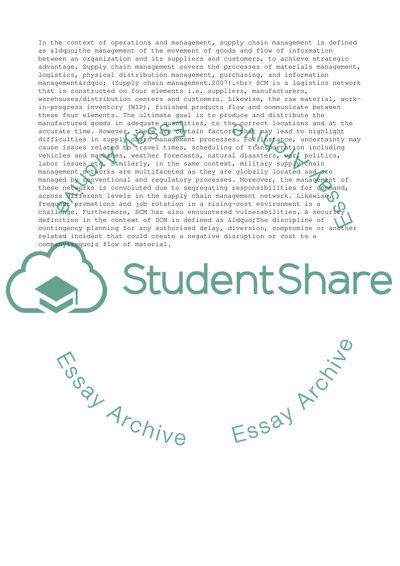Cite this document
(Supply Chain Management Challenges in the Army's Supply System Term Paper - 1, n.d.)
Supply Chain Management Challenges in the Army's Supply System Term Paper - 1. Retrieved from https://studentshare.org/management/1754496-recognize-supply-chain-management-challenges-in-the-armys-supply-system
Supply Chain Management Challenges in the Army's Supply System Term Paper - 1. Retrieved from https://studentshare.org/management/1754496-recognize-supply-chain-management-challenges-in-the-armys-supply-system
(Supply Chain Management Challenges in the Army'S Supply System Term Paper - 1)
Supply Chain Management Challenges in the Army'S Supply System Term Paper - 1. https://studentshare.org/management/1754496-recognize-supply-chain-management-challenges-in-the-armys-supply-system.
Supply Chain Management Challenges in the Army'S Supply System Term Paper - 1. https://studentshare.org/management/1754496-recognize-supply-chain-management-challenges-in-the-armys-supply-system.
“Supply Chain Management Challenges in the Army'S Supply System Term Paper - 1”, n.d. https://studentshare.org/management/1754496-recognize-supply-chain-management-challenges-in-the-armys-supply-system.


